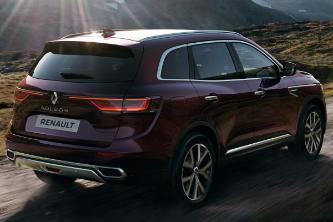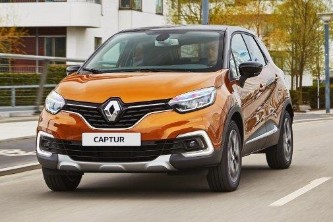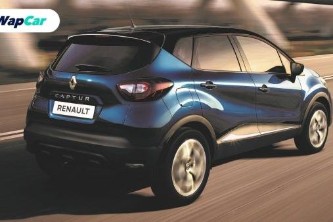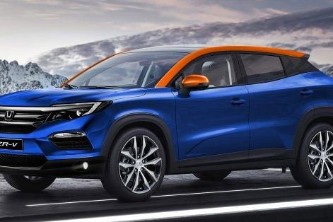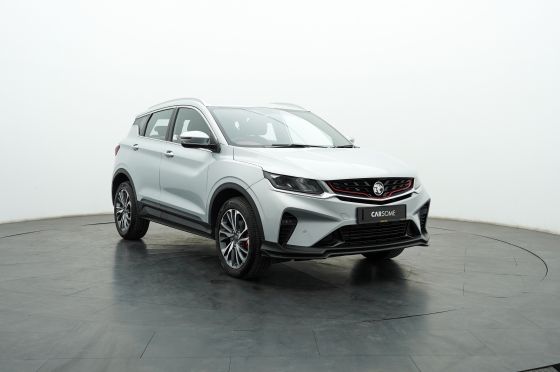renault captur battery
renault captur battery Related Articles

Like this chequered Renault Captur Trophy? It’s a limited edition
The Renault Captur is now sportier than ever with the introduction of a new Limited Edition Captur Trophy
No strings attached, the 6MT, 280 PS Renault Megane R.S. 280 Cup is now available for subscription
TC Euro Cars, the sole franchise holder of Renault vehicles in Malaysia today announced that Renault
China’s battery giant CATL claims 2 million km electric car battery ready
CATL has announced that it is ready to produce an electric car battery with a battery lifespan of a million
TCEC is working on a new Renault App for your car
Hoe Mun revealed that the distributor is in the process of building a new mobile application for all Renault
Renault’s subscription plan is a commitment-free alternative to car ownership
maintenance or insurance cost – all covered Return the car after 1 or 2 years Switch between a 5-seater Captur
What is the Renault Relax campaign and what does it cover?
To offer Renault customers an extra peace of mind, TC Euro Cars (TCEC) has introduced the Renault Relax
TC Euro Cars is running a 15-day Renault Passion Week on Shopee!
TC Euro Cars (TCEC) the official distributor of Renault Vehicles in Malaysia, is running a 15-day Renault
Covid-19: Renault Malaysia can deliver cars to your doorstep pre-sanitized
Although all Renault showrooms will be closed during the nationwide movement control order from 18 to
Renault Subscription contributes to over than 50% of Renault Malaysia's sales
TC Euro Cars (TCEC), distributor of Renault vehicles in Malaysia, introduced Renault Subscription in
Owner Review: An Overlooked French Gem – The Renault Fluence
** This article is the personal experience of a 2017 Renault Fluence owner and does not necessarily reflect
Sanitise your Renault at the Renault service centre in PJ
normal where sanitisation and disinfection is the norm, TC Euro Cars (TCEC) has introduced the special Renault
Renault Subscription plan turns one - named Malaysia's Car Subscription Company of the Year 2020!
family of three models – Captur, Koleos and Megane RS covering seven variants.
Pre-owned Renault Captur for RM 60k, SUV for price of Myvi?
on limited units of the Renault Captur lifestyle crossover for brand-new and pre-owned units starting
After Volvo, Renault to cap their cars to 180 km/h, including Renault Sport models
it seems like the next manufacturer to follow that move is Renault.During a recent general meeting, Renault
Renault Clio overtakes Volkswagen Golf as Europe’s best-selling car
According to Jato Dynamic’s monthly report, the Renault Clio, with 24,915 units registered, has
Tesla battery supplier to build USD 1.2 billion EV battery plant in Indonesia
State-owned Indonesia Battery Corporation (IBC) and a consortium led by South Koreas LG Group (including
Renault Malaysia updates all Renault Subscription plans
The annoucenment came after the distributor expanded the Renault Subscription Trial Plan to offer unlimited
This is how Renault E-Store is helping TC Euro Cars ride out Covid-19
going mainstream with Renault Captur.
2020 Kia Seltos previewed to Malaysian dealers, set to challenge the Honda HR-V
Facebook page, hinting the arrival of the Kia Seltos.Set to compete against the Honda HR-V, Mazda CX-3, Renault
Up to 90 percent discount on selected parts for selected Renault models
TC Euro Cars (TCEC), the sole franchise holder of Renault vehicles in Malaysia, has announced a clearance
Renault Captur April Used Car Offers
Renault Captur Related Cars
Renault Captur Competitor Cars
Renault Captur Comparison
You May Also Like
renault captur battery Post Review
Thinking hybrid? Think the all new Renault Captur E-Tech. With an 8 year battery warranty, up to 30 miles full electric range and more. Click the link to view our Finance examples. https://t.co/f4ZCyEaRRZ https://t.co/X0bwbycYbG
#Renault #Captur & #Clio #E-TECH #Plug-in #engine and its increased battery capacity (9.8 kWh and 400V) mean that the All-New Captur can run at 100 per cent #electric for 30 miles (WLTP)with a top speed of 85 mph. #renaultclio #PHEV #EV https://t.co/W5UMxaCqOJ
You can now order the Renault Captur as a plug-in hybrid. With a 1.6-litre petrol engine and a 9.8kWh battery, it can travel for up to 30 miles under electric power alone. Prices start from £30,495 🚘 https://t.co/iAckPFKA21
Last week we told you about a Discover 4 with the stickers on the battery... This time is was a Renault Captur So to answer previous questions, yes this does happen, seems that it IS quite common and no we don't laugh! https://t.co/Q5B8JsVeSJ
To feed the electric motor that provides the necessary torque, the Renault Captur E-TECH Plug-in uses a lithium-ion battery with a capacity of 9.8 kWh, installed horizontally below the back seat. https://t.co/8RDVbouqGs
Did you know that PHEVs perform best when the battery is regularly charged? In this round of results, the two Plug-in Hybrids – the Renault CAPTUR E-TECH and @VW Golf 8 GTE – are awarded three and a half stars. https://t.co/gqR4Ro6CFf https://t.co/4L4utudXOt @renaultgroup https://t.co/xqJhSPqOxI
Model: Renault Captur E-TECH Battery: 9.8 kWh Range: 30-miles Price: From £31,495* On sale: Now @Renault_UK Plug-In Hybrid, 1.6-litre petrol engine with a 9.8kWh battery for zero emissions capable driving. What do you think? [*price correct at time of publication] https://t.co/lVeepOO4VX
Renault Captur PHEV now on sale in the UK Powered by a 1.6-litre petrol engine, two electric motors and a powerful 9.8kWh battery Based on modular CMF-B architecture, designed for electrification from the start #PHEV #renault https://t.co/z8knyxQEut
@TilmanWinkler @kedarus @Tesla @Porsche No. My argument is that tech needs time to evolve. Batteries are used in devices other than cars too. And remember: the first mass-market BEVs were Nissan Leafs, Renault Zoes and Chevy Bolts. Not fancy? True, but neither is a Renault Captur.
When the battery is not charged, the Renault Captur E-TECH Plug-in acts like a “traditional” (non-rechargeable) #hybrid vehicle. Designed for city driving, longer trips, and even vacations, it offers a flexibility that is currently unmatched by any other vehicle on the market!
renault captur battery Q&A Review
Why did Alonso in his second stint with McLaren fail to have performed while Lando Norris recently scored third podium? Is it Alonso or McLaren to blame?
The Background The key component to blame here is the Honda engine that McLaren used between 2015 and 2017. However, this does not tell the full story of the decline of one of F1’s most successful constructors. To start, you have to look back to 2009, where Mercedes wanted to buy an F1 team for themselves. At the time they owned a 40% stake in McLaren which wasn’t yet a full-fledged road car manufacturer. Ron Dennis, long time boss and shareholder had no intention of selling the team he had led to dominant title wins in 3 different decades. Mercedes instead purchased the Brawn GP team which was moulded from the ashes of the old Honda and British American Racing team. That team would go on to be the most dominant force in the sport’s history. Mercedes personnel left the McLaren board (although Mercedes wouldn’t sell their shares till 2012), and McLaren was relegated to being a customer team of Mercedes for engines. The two major implications in this are that McLaren would have to pay for engines and would no longer be able to keep tabs on the engine development side to develop their car concurrently. They would be behind the works team when it came to designing the car around the engine. The team were reasonably competitive in 2010 and 2012, with 2010 going down to the wire and 2012 failing despite the McLaren cars being perhaps fastest on track, they lost out in disastrous pitstop failures and reliability issues. It is believed that Lewis Hamilton retiring from the lead of the Singapore Grand Prix was the proverbial straw that pushed him to Mercedes. The decline began to show in 2013 when the team failed to score a single podium for the first time since the 1980 season. The issues were put down to the poor correlation between wind tunnel simulations and real-world characteristics of the car. Onlookers were confused as to why McLaren would bring an all-new design concept for 2013 instead of evolving on the previous year’s car as its major rivals had done, especially when a fresh design would be required for the new 2014 regulations. 2013 would also be McLaren’s final year sponsored by Vodafone, and the team wouldn’t bring back a title sponsor since. The 2014 MP4–29. That’s a beautiful livery. Anyway, onwards and upwards into F1’s new V6 hybrid era right? Well, that’s what it seemed like in the first race of 2014 in Australia as Jenson Button and new driver Kevin Magnussen finishing 3rd and second respectively. However, this would be McLaren’s final appearance on the podium for years to come. The Dark Ages While the MP4–29 car wasn’t fast, it was reliable It finished 36 times out of 38 making it the most reliable car that year. However, the big news was Honda returning to the sport for the first time since 2008, and powering McLaren for the first time since 1992. The 1988 McLaren Honda is the most dominant F1 car of all time, winning 15 of 16 races, so expectations for the reunion ran high, as Fernando Alonso, an unbelievably talented driver was to return to McLaren to give the team their strongest lineup since Lewis Hamilton left at the end of 2012. Ron Dennis was happy as the team had returned to works status and was no longer a customer. Top brass saw this is as the best way to return to long term success. An added bonus was Honda providing a $100 million a year boost to McLaren’s budget. However, this new chapter in McLaren’s history was an outright disaster from the get-go. They only managed 6 laps in a post-season test in 2014, they completed the fewest laps in pre-season testing (by half!). It was clear that the engine was not just unreliable but slow as well, making the season a complete disaster. According to Jenson Button, the cars lack of power meant they were at full throttle longer, which led to the car using more fuel, reducing efficiency. As a result, they had to lift and coast into corners to finish races. The 2015 car was a looker but mechanically disastrous. The problem was that Honda had a much shorter lead time before entering the sport and had to build a team from scratch. Honda’s problems were exacerbated by McLaren’s “size zero” philosophy as McLaren engineers tried to make the rear end of the car as slim as possible. This meant that Honda had less cooling capacity to play with as the tighter side pods meant smaller radiators. Other problems included an inefficient MGU-H which meant the car couldn’t charge its battery as quickly losing it 160hp halfway through a lap. The engine ended up being over 120hp less powerful than the all-conquering Mercedes. Fernando Alonso described the situation as very embarrassing and called the engine “GP2” (F1’s feeder series) over the radio at Honda’s home race in Japan. McLaren piled on the pressure by saying its chassis design was excellent, evidenced by the team’s highest points haul being at Hungary, as chassis intensive circuit. Honda admitted it that it had underestimated the demands of F1, and failed to entice key personnel from rival teams. Ultimately the car retired 13 times as opposed to 2 the previous season, with only 6 points finishes, leaving the McLaren team languishing in 9th place in the championship. Hope? The 2016 season was a lot better, as the car took 17 points finishes, although reliability remained an issue, with 10 retirements. McLaren improved to 6th in the championship. Again with the cars performing strongly in Monaco and Hungary, McLaren felt vindicated as they placed the blame for the team’s issues on Honda. The season would be one of change for McLaren as team boss Ron Dennis who ran the team from 1980 was removed from his position as chairman, marking an end to his remarkable F1 career. Another change would be their world champion driver Jenson Button leaving the team at the end of the season after 7 seasons, as he would enter retirement. The big change from Honda would be that they were scrapping their design concept and starting from scratch to bring an all-new design to the table in 2017. A return to despair. The new concept was not competitive and with McLaren back to the bottom of the testing charts, the team was in for another difficult season. Honda’s project manager for the F1 division admitted that the concept was risky and that realising its potential would take a long time. This period was captured by an Amazon Prime documentary called “Grand Prix Driver” and I do suggest watching it. This documentary has more awkward moments than ,The Office The team would face fourteen retirements and only eight points finishes as they finished 9th in the championship once again. In September, it was announced that McLaren and Honda would split and that McLaren had secured a 3 year supply of customer Renault engines. Renault was still some way behind Mercedes and Ferrari but certainly ahead of Honda at that time. The French adventure. With McLaren securing reasonably powerful engines for 2018, much hype surrounded their return to competitiveness. This was compounded by a double points finish in the first round in Australia with Alonso remarking “now we can fight”. His optimism would be misplaced as that would be the teams best result for the season and 6th place was the best they could manage. After 3 years of blaming Honda, McLaren’s management no longer had anywhere to hide and their uncompetitive chassis was shown to the world with many remarking that Honda may have shouldered an unfairly large portion of the blame. The car’s poor performance was put down to the team having to make major changes to the engine bay and rear suspension to accommodate the new car. Midseason upgrades made the car easier to drive but results didn’t improve and McLaren was unable to find a solution from wind tunnel testing. Having had enough of spending week after week in sub-par machinery, Alonso announced his retirement from F1 (and we all know how that went.) Returning to form The all-new 2019 driver lineup of Carlos Sainz and Lando Norris, as well as the new MCL 34 car, proved to be a major step up. McLaren were regular points finishers and made many Q3 appearances as well. The team finished 4th in the standings, their best in 7 years, while also getting their first podium since Australia 2014. They’ve performed strongly in the first races of 2020 as well, currently 2nd the standings after the Styrian Grand Prix, with Norris 3rd in the driver’s standings. So what changed between Alonso leaving and the team’s improvement? In short: Appointment of Andreas Seidl as team principal of the F1 side. He had F1 experience, working for the BMW F1 project for 9 years, before managing their very successful DTM return which saw the team take the DTM crown in their first season. He went on to Porsche LMP1 where the team would take a hat-trick of victories at LeMans with Seidl as principal. Allowing Zak Brown to get on with it on the commercial side. While McLaren hasn’t signed a new title sponsor, they have struck high value deals with British American Tobacco, Dark Trace, Dell Technologies and more, and the car looks a lot less bare than it did in 2017. Getting the car right for the new engine. The 2018 car was a radical redesign rather than evolution and it took some reworking before the thing hit form. The positive attitude between the drivers. Alonso and Vandoorne are very different drivers when they were paired whereas Sainz and Norris seem to get on more closely and have a positive public relations. This, in turn, brings a positive environment to the team. Becoming more fun. The team ditched its corporate vibe that Ron Dennis had worked hard to cultivate and brought on a more fun attitude, leveraging their young star driver’s popularity to achieve this. This, in turn, would help improve morale around the factory, which had been lacking after years of poor performance. You can see that the 2019 car (R) looks like it has been attacked by a child with a sticker book compared to the 2018 car (L) A bright future? The big news for the future is that McLaren is returning to customer Mercedes engine status. At the moment, Mercedes have the best engine on the grid. It would certainly be the best benchmark for the team to compare their progress against. However, with development limits between 2020 and 2021 to reduce costs due to the COVID-19 crisis, McLaren has limited room to manoeuvre a new engine into their existing chassis. As they've learnt before, changing engine partners isn’t easy. However, given Mercedes’ history as a successful engine manufacturer for 25 years, they can be reasonably confident that the team will be secure in their decision and any setback will only be temporary. With Lando Norris remaining for next year and the experienced and successful Daniel Ricciardo joining, the team looks strong in the driver talent department, and their new signing is known to be a bit of a joker and an easy-going personality, so their shift in their public image seems to be moving in the right direction as well.
How could VW’s EVs affect Tesla?
Tesla has the largest market share but it faces competition from European automakers. In May 2020 Tesla captured less than 20% of total EV sales worldwide. Meanwhile Renault Zoe captured 4%, VW e-golf 3%, BMW 530e/Le 2%, VW Passat BEV 2%. ,Global Top 20 May 2020 You can also observe that VW has already two vehicles in top 15 best selling EVs. In 2019 VW has further advanced into EV market and has started ID.3 production in 2019. ,Volkswagen starts factory production of electric car it says is 'accessible to millions' From 2021 VW also plans to produce 330,000 EVs on Zwickau plant. The lightning speed of the rollout and lack of production bottlenecks would put pressure on Tesla’s position and market share. Overall, even though Tesla has a number of competencies in terms of software and batteries manufacturing, VW can bring significant capacity into the EV market and decrease the profitability margins.
What is stop start, and is it there in your car? How was your experience?
The stop-start system is a system that stops the engine when you come to a stop and starts the engine again when you want to continue your way. This way the engine doesn’t keep burning fuel while you’re standing still. It saves you fuel and it is better for the environment. I have driven several cars with a start-stop system. In all of them the system will only engage when you bring the car to a complete stop, put the car in neutral and take your foot of the clutch. It starts the engine as soon as you press the clutch again. To ensure the engine will start reliably, the system monitors several parameters like engine temperature and ambient temperature. If it is too cold, the engine might have issues starting quickly, so the engine is not stopped when the car stops. Also, when the airco is on, the engine may not be stopped at all or it will stop but turn on before you press the clutch. The compressor for the airco would otherwise drain the battery very rapidly or maybe it can’t even work at all with the engine turned off. In all car’s I’ve driven with a start-stop system, there was a button to disable the system. If for some reason you don’t like or trust it, you can turn it off. Personally I found it a useful system but it does take some getting used to. It’s rather annoying to be stopping at a traffic light and have the motor stop only to have the light turn green in that instant. Especially when you are the first person in line. I always tried to guesstimate how long it would take for the light to turn green and if it was worth it to let the motor stop. If not I would keep the clutch pressed, so the engine would not stop. Not all stop-start systems are created equally and some work better then others. The systems in the VW’s I’ve driven all worked pretty good. The system in my dad’s Renault Captur sometimes works just fine, at other times it is super annoying.
Will Tesla Motors become the largest automotive company in the world?
Will Tesla be the most profitable car company in the future? Very interesting question and a variation to the frequent, “Will Tesla go bankrupt?” questions. Nobody knows the future for sure but one can look at indicators and try to make a prediction. Here are my thoughts on the subject. The switch to battery EV’s is almost a certainty, much the same way as the switch from horse and buggy to cars was certain in 1910. When something has undeniable benefits (no emissions, higher convenience and performance) and there is a basic underlying need (for transportation) it is just a matter of time. Tesla is the leading EV company by far outside China and maybe soon inside China too. The current global sales volumes of cars are 86 million. We can expect that the demand for zero emission cars will reach that level in 5–10 years or even higher as ICE cars are banned. This means that demand will be higher than supply for the foreseeable future. Anyone who can offer an attractive EV can sell it. The problem for legacy auto is that they cannot sell EV’s with a profit yet while Tesla has great margins on their cars. The most important thing for being profitable is to have a great product margin, i.e. that the cars can command a much higher price than the cost to produce them. Tesla has been at 25–30% with their luxury models and are currently at 14% with their affordable Model 3. Tesla expects to reach 25% margin for Model 3 as their cost gradually shrinks due to larger scale and increasing manufacturing experience. Tesla reports negative results at the moment which is due to that Tesla is spending a lot on new models and expanding production capacity. This will change as the contribution from sales scale faster than expenses. Suzuki is currently the most profitable car company in the world at 11.8% profit margin. There is no reason to think that Tesla could not beat that when they have sufficient volume to cover their overhead. My estimate is that it will require sales of about 2 million cars annually, no increase in R&D, SG&A kept under control and more efficient production. More efficient production is likely as the Shanghai factory is up and running. To also have the highest profit, not just profitability, it is likely that Tesla has to reach similar size as current mass producers, VW or Toyota. I think that is doable for the reason that the current ICE market is split between VW, Toyota, Daimler, GM, Ford, FCA, Nissan-Renault etc… When it comes to Battery EV’s there are fewer credible competitors. Tesla has the opportunity to capture a large chunk of the market before anyone else has anything competitive to offer. Tesla has many years of experience in producing top of the line BEV. Legacy auto have launched “Tesla killers” that are not competitive with a Tesla from 2012. There are no indications that they move faster than Tesla so while their offerings will improve, so will Tesla’s. The key to profitability in BEV is to control your supply chain. Tesla produces their own battery packs and develop their own battery chemistry. It is likely that Tesla will maintain a lead in battery tech and cost, at least for the foreseeable future. There are challenges too of course. Huge challenges. No one has attacked and disrupted the auto industry this hard in a century and those who have tried have failed. The existing oil/auto complex has a lot of financial and political power and will fight back with FUD, lobbying and foul methods just as they will fight back with better products and their own BEV offerings where VW seem to be the one betting the most. There could be technology shifts in battery and drive line which takes Tesla by surprise, however it is more likely that Tesla will be the first with the next generation battery tech. There could be a huge shift to public transportation but it is unlikely that their will be much more capacity in just a decade. Tesla could decide to sell at lower prices to maximise deployment rather than profit. Cost of battery could rise if mining capacity isn’t built at sufficient pace. Tesla could fail spectacularly with a new car model or with the new car factory but it is not very likely. The biggest challenges are behind Tesla and they will get more than one attempt to solve future challenges. There won’t be more “bet the company” projects according to Elon, but who knows with this guy?
If you wish to do your own maintenance is it better to own an older or newer vehicle?
An older one, of course! Cars made nowadays are a maintenance and repairs nightmare! Peugeot 203 (1948–1960) Jaguar E / XKE (1961–1975) Triumph Herald (1959–1971) Renault Captur 0.9 TCe (2013 - now). Except the battery and the coolant expansion tank, can you tell what are those things in the engine bay??
renault captur battery Related FAQs
What is the Model of Renault Captur?
Here are the Model and variants of Renault Captur:
Variants 2017 Renault Captur TCe 120 EDC (CKD) Model Renault Captur What is the Rear Brakes of Renault Captur?
Here are the Rear Brakes and variants of Renault Captur:
Variants 2017 Renault Captur TCe 120 EDC (CKD) Rear Brakes Drum Is Renault Captur available in Cupholders?
Yes, Renault Captur is available in Cupholders. The available Cupholders variants are: 2017 Renault Captur TCe 120 EDC (CKD).
 HOME
HOME 